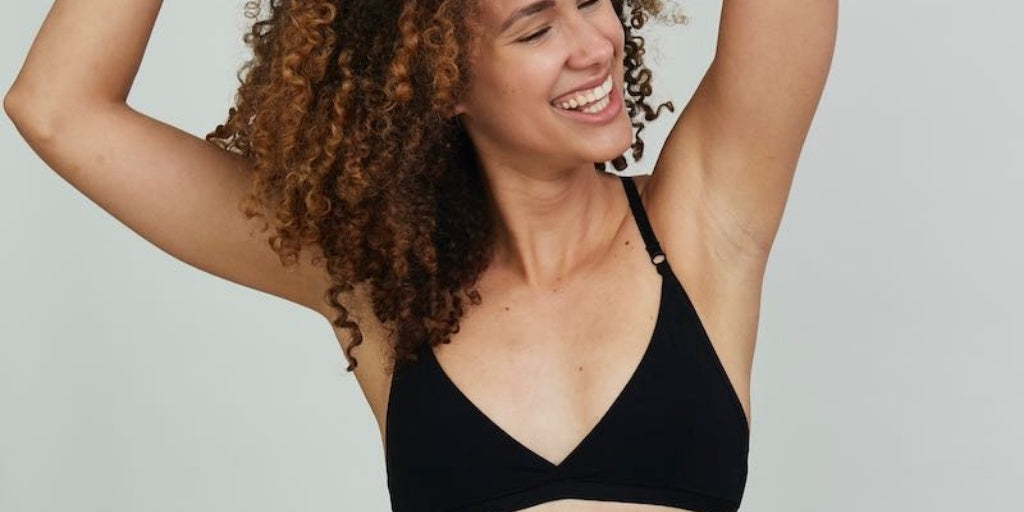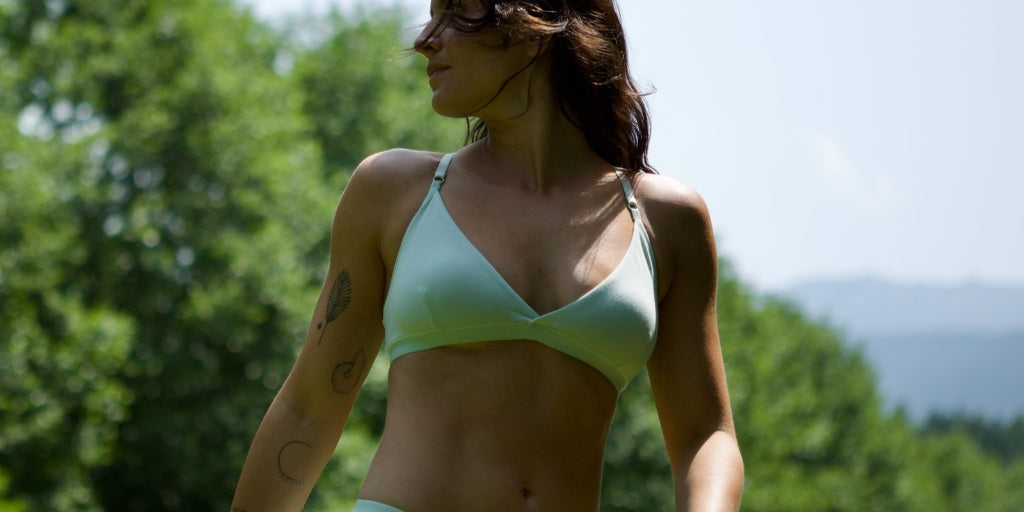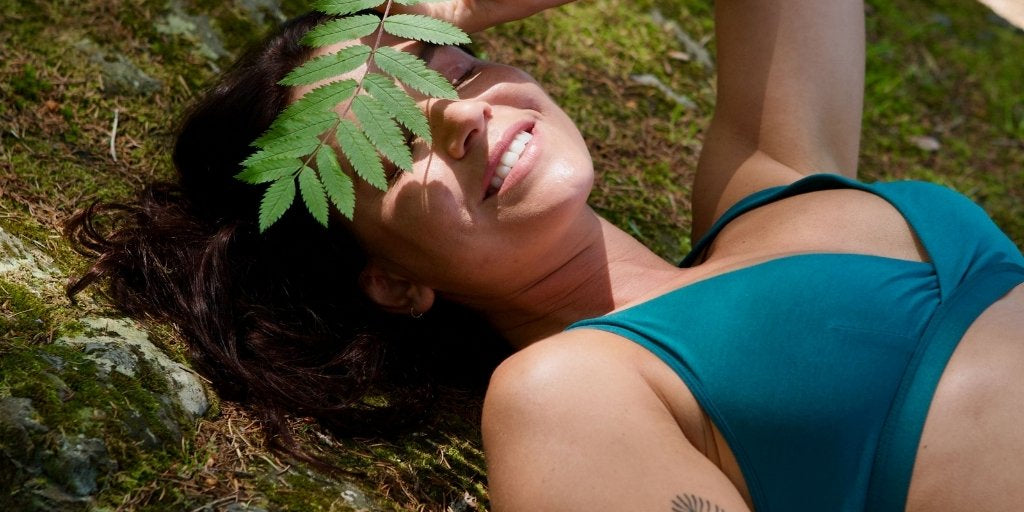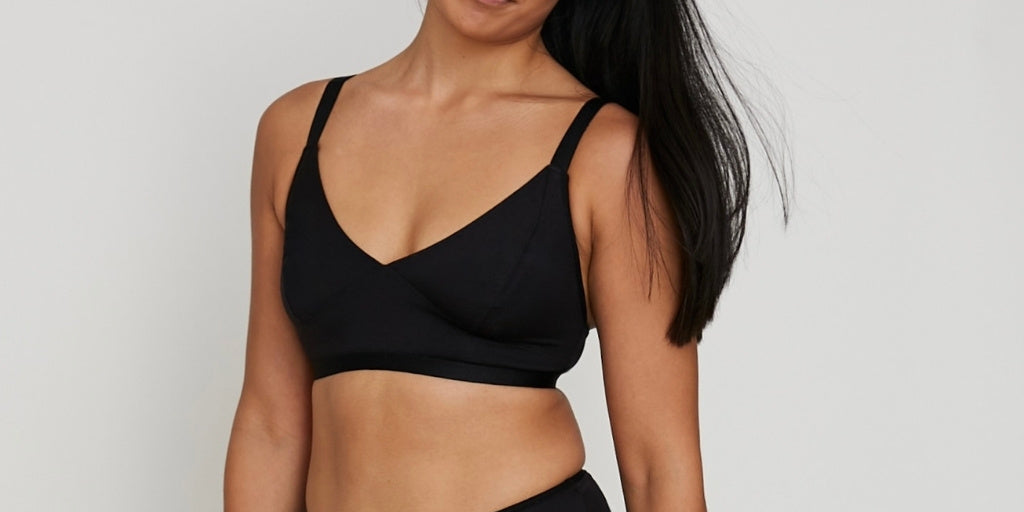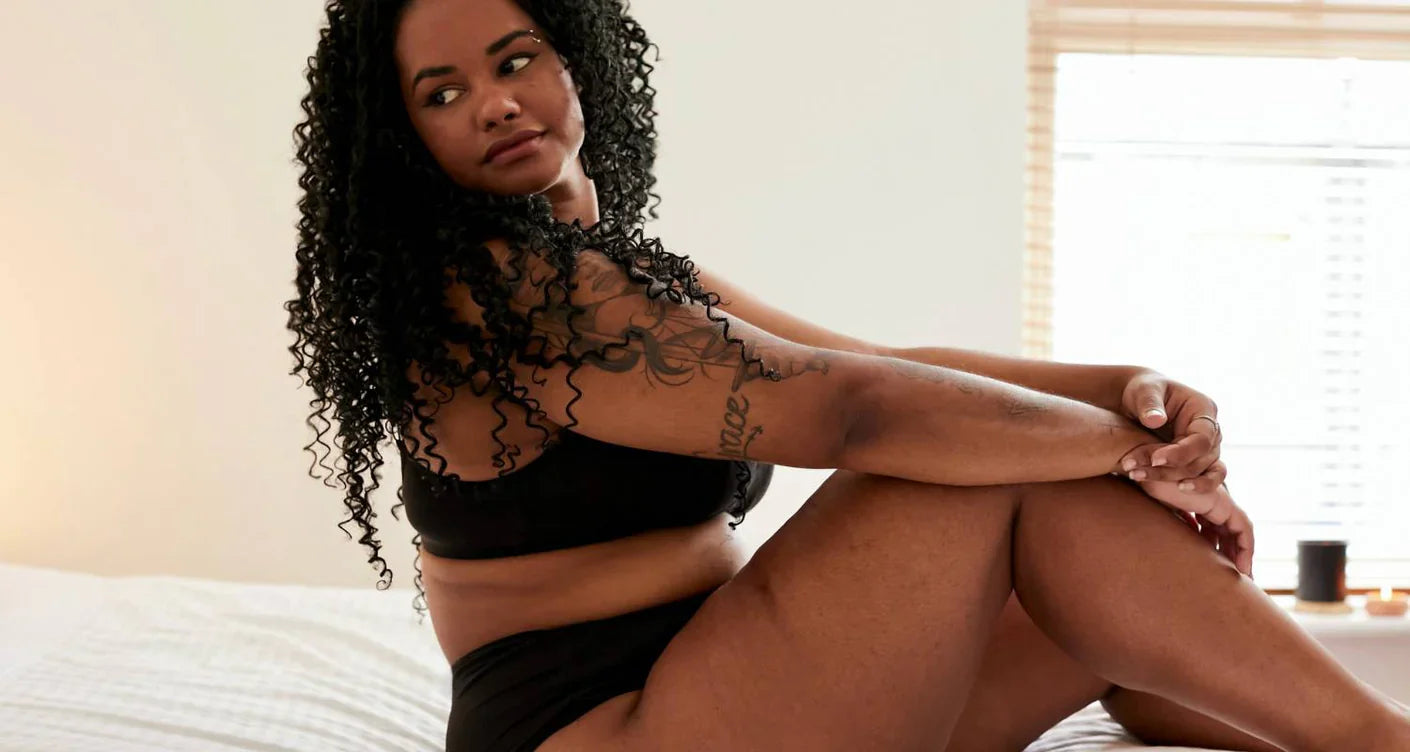If you’ve ever wondered whether your bra is truly the right size, you’re not alone. Many of us are unknowingly, or maybe even knowingly, wearing bras that don’t fit properly but don’t know how to solve the problem.
According to the American National Breast Cancer Foundation, four out of five women are wearing the wrong bra size. While they also stress that how your bra fits doesn’t affect your breast cancer risk, it’s still an important factor in overall breast health [link to Boobs, Bras and Your Health], and can lead to many problems including discomfort, pain, and even posture problems.
And, a well-fitted bra isn’t just about physical comfort – it’s about feeling confident, supported, and at ease in your own skin.
With a few simple tips and tricks, you can find the perfect fit. And we’re here to guide you every step of the way. From measuring yourself at home to spotting signs of a poorly fitting bra, we’ve got you covered, literally.
Why Do Accurate Measurements Matter?

Your body is unique, and so are your needs. Finding your true size ensures you get the right support and eliminates the discomfort caused by bras that are too tight, too loose, or just plain wrong for you.
Keep in mind that sizes can vary between brands and styles, so measuring is always worth the effort.
So, let’s dive into the essentials that will change the way you think about your bras forever.
How to Measure Yourself at Home

Knowing your bra size is the foundation of comfort and support. Here’s a simple step-by-step guide to help you measure yourself accurately – no professional fitting required.
-
Gather Your Tools:
-
You’ll need a soft measuring tape, a mirror, and a non-padded bra (or no bra at all if that’s more comfortable).
-
Measure Your Band Size:
-
Wrap the measuring tape snugly around your ribcage, directly under your bust.
-
Ensure the tape is level and parallel to the floor.
-
Use your exact underbust measurement or round up to the next even number if in between sizes.
-
For Bon+Berg bras, you can use your exact underbust measurement or round up to the next even number if in between sizes.
-
For example: If you measure 30 inches (76 cm), your band size will be 30 (75) or 32 (80), depending on your preference.
-
Note: Some lingerie brands use different methods when calculating their bra sizes. Always be sure to check the method used by each individual brand.
-
Measure Your Bust Size:
-
Place the tape around the fullest part of your bust (usually across the nipples).
-
Keep the tape snug but not tight, and make sure it’s level all the way around.
-
Round to the nearest whole number. This is your bust measurement.
Note: For Bon+Berg bras, you can use these measurements to directly select your size S, M, L, etc. For other brands you may also want to know your cup size.
-
Calculate Your Cup Size:
-
Subtract your band size from your bust measurement. Each inch represents a cup size (1 inch = A, 2 inches = B, 3 inches = C, etc.). For centimetres, 12 cm = A cup, 14 cm = B, 16 cm = C… and just keep adding 2 cm.
Pro Tips for Accuracy
-
If you’re comfortable having someone assist, stand straight with your arms relaxed at your sides and allow them to take your measurements.
-
Otherwise, measure yourself by using a mirror to ensure the tape is straight and even.
-
Don’t measure over bulky clothing, as it can distort the results.
What Are Some Signs of a Poorly Fitting Bra?
Wearing the wrong bra size isn’t just uncomfortable, it can also impact your health and posture. This checklist will help you to determine whether your bra fits correctly.
Too Tight
-
Red Marks: Indentations or marks on your skin after removing your bra indicate it’s too tight.
-
Restricted Movement: Difficulty breathing or discomfort around your ribcage could signal that the band is squeezing too much.
Too Loose
-
Riding Up: If the band rides up your back, it’s a clear sign it’s too loose.
-
Slipping Straps: Straps that fall off your shoulders despite tightening suggest an ill-fitting band.
Cup Issues
-
Spillage: Breast tissue spilling over the top, sides, or bottom of the cups means the bra is too small.
-
Gaps: Excess space in the cups indicates the bra is too large.
Underwire Problems (With Bon+Berg bras, this won’t be an issue!)
-
Digging or Poking: Underwire pressing into your skin or poking out of the fabric is a no-go.
-
Not Flat: The centre of the underwire should lie flat against your chest; if it doesn’t, the size or style may be wrong.
What Should a Perfect Fitting Bra Feels Like?
-
Band: Firm and snug, sitting level all the way around without riding up or digging in.
-
Straps: Comfortable and supportive without digging into your shoulders.
-
Cups: Smooth, with no gaping or spillage.
-
Underwire: Supportive but unobtrusive, lying flat against your ribcage.
What are the Benefits of a Soft Bra?

With soft bras that are unpadded and wire-free, you can still get the support you need without many of the usual bra fit issues.
The fabric should gently hug your skin, which means no gaping. Underwire issues and restricted movement will be a thing of the past! Plus, you’ll have a little more flexibility when it comes to sizing.
Discover Bon+Berg’s selection of soft, comfortable, and chic bras and bralettes.
When to Replace Your Bra
Even the best bra won’t last forever, no matter how durable it might be. Knowing when it’s time to replace your bra is just as important as finding the right fit.
How Long Does a Bra Last?
On average, with regular use, a bra should last 6–12 months. Factors like material quality, care routine, and frequency of wear can extend or shorten this lifespan. Even sustainable bras eventually wear out due to constant use. But the good news is they can be disposed of ethically.
Signs It May be Time for a New Bra?
-
Loss of Elasticity: If the band or straps have stretched out and no longer provide support, it’s time for a replacement.
-
Cup Deformity: Creases, flattening, or other permanent distortions in the cups are a tell-tale sign the fabric has lost its life and it’s time to let go.
-
Broken Underwire: Unfortunately, if the underwire pokes through the fabric or breaks, it’s not worth fixing.
-
Fading or Fraying: Visible signs of aging, like frayed edges or faded colours, might mean it’s time to retire the bra.
-
Lack of Comfort: If your bra feels unsupportive or uncomfortable, while it might feel unsustainable to dispose of it, your health is important too. So don’t force something that could be doing more harm than good.
Before deciding to put your done-for items in the bin, there may be solutions. Why not try a little refreshing first. Sometimes a little snipping or dyeing can extend a well-worn bra’s lifespan. A good plan if it’s one of your favourites.
Or if your bra is still wearable, look for local charity shops that accept undergarments or bring them to a clothing swap. If there’s just no saving, look to dispose of old garments mindfully.
And if it’s truly time to say goodbye, be sure to invest in new quality pieces.
What are some tips for extending the lifespan of your bra?
-
Wash Gently: Hand wash your bras whenever possible, or choose a delicate cycle with a lingerie bag.
-
Skip the Dryer: Air-drying preserves elasticity and prevents fabric damage.
-
Rotate Regularly: Avoid wearing the same bra two days in a row to give it time to recover its shape.
-
Wash less frequently: Consider how often you really need to wash your bra. If it’s only lightly worn, you could always skip the laundry basket. We tend to overwash our garments. Sometimes it’s ok to hold off for an extra wear or two.
Expert Insights: What Professionals Say About Bra Fit

When it comes to choosing the right bra, health professionals emphasise the importance of proper fit and materials. Here’s what the experts say:
-
According to The Chartered Society of Physiotherapy in the UK, wearing a properly sized bra means you will look great, be well supported, and you’ll discourage unnecessary discomfort. They recommend yearly measuring to accommodate any changes in your body shape.
-
For those with sensitive skin, British author Ruth Holroyd, an expert on allergies and eczema, highlights that bras can be uncomfortable, restricting, and irritating for those who have allergies or eczema. To minimise skin irritation, she suggests opting for bras without underwire that are made from natural, breathable fabrics like organic cotton or TENCEL™.
-
Physiotherapists at Central Health Physiotherapy in London point out that poorly fitting bras can cause shoulder, neck and back tension. They stress the importance of measuring yourself regularly for optimal support and comfort.
The Bottom (or Top!) Line
A well-fitting bra is more than just an undergarment. It’s essential in ensuring your comfort, health, and confidence.
With these simple tips and tricks, you can measure yourself accurately, identify poorly fitting bras, and know when it’s time to replace them.
And it’s so easy. Just grab a measuring tape and take the first step to finding your perfect fit. Most important, because when you feel good underneath, it will shine through on the outside.
Shop our latest collection of soft, sustainable, and supportive bras.


